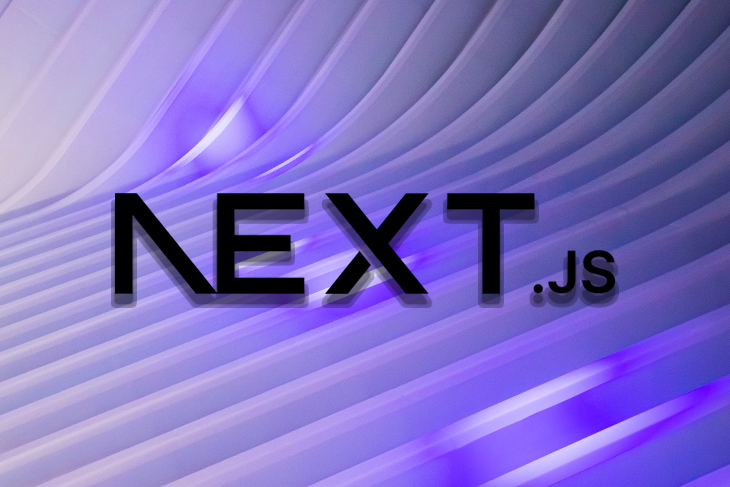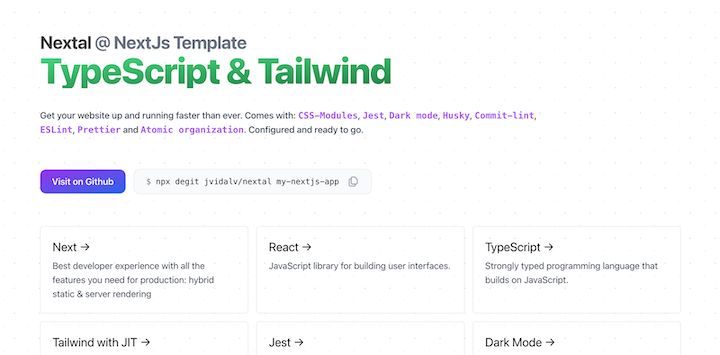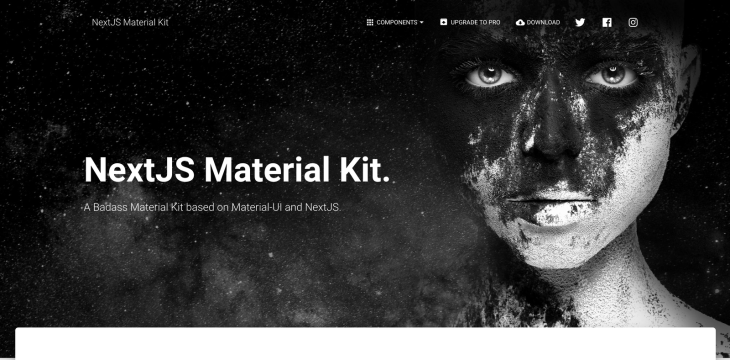
Editor’s note: This article was last updated 17 May 2023 to include additional Next.js blog starter templates, like Suncel and create-t3-app.

If you want to build a server-rendered React application with Next.js but don’t know where to start, one option is to use a starter template. Starter templates offer a pre-configured foundation for your project, saving you time and effort by providing a basic structure and functionality that you can build upon.
Next.js is a popular framework for building server-rendered React applications. It offers a number of benefits like automatic code splitting, easy deployment, and optimized performance. By using a starter template, you can get up and running with Next.js quickly and easily without having to set up a project from scratch.
In this article, we’ll explore a selection of top Next.js starter templates that were chosen for their versatility, ease of use, and overall quality. Whether you’re building a simple blog or a complex web application, one of these Next.js website templates is bound to meet your needs. Let’s get started!
Jump ahead:
The Replay is a weekly newsletter for dev and engineering leaders.
Delivered once a week, it's your curated guide to the most important conversations around frontend dev, emerging AI tools, and the state of modern software.
The ThankYouNext starter template is a powerful tool for developers looking to quickly set up a new Next.js project. It offers a wide range of features and has best practices already in place. This Next.js starter template was bootstrapped with Create Next App, making it easy to get started with a new project:

One key feature of this starter template is its use of Preact, a lightweight and fast React alternative that can help improve your application’s performance. Additionally, the ThankYouNext template is configured to use TypeScript, a popular typed superset of JavaScript that can help you catch errors early and improve the overall quality of your code.
ThankYouNext also includes built-in support for SASS, a powerful CSS preprocessor that allows you to use variables, mixins, and other advanced features in your stylesheets. This, along with the use of Modern CSS Reset by Andy Bell and absolute imports, makes it easy to create clean and consistent styles throughout your application.
Another great feature of the ThankYouNext starter template is its use of React Strict Mode, which can help you find and fix potential problems in your application before they become critical. Additionally, this template has a ready-to-use SEO setup that can be helpful for boosting your website’s visibility and increasing organic traffic. Lastly, ThankYouNext includes many security headers like the Content-Security-Policy and Referrer-Policy headers, which can help protect your application from common web-based attacks.
The ThankYouNext starter template is a great choice for developers who are looking for a powerful and feature-rich starting point for future projects. With its focus on performance, security, and best practices, ThankYouNext is an excellent choice for those who want to create a high-quality Next.js application.
Nextless.js is a Next.js SaaS starter template that is designed to help developers quickly build scalable and production-ready SaaS products. It includes a wide range of features that are essential for building successful SaaS applications, like authentication, payment, teams, dashboards, landing pages, and email functionality:

One of the key features of Nextless.js is its use of Next.js for static site generation, which enables developers to create fast and efficient websites that are optimized for performance.
The Nextless.js starter template uses TypeScript for type checking, helping to catch errors early and improve the overall quality of your code. It also uses Tailwind CSS, a popular utility-first CSS framework that makes it easy to create consistent and customizable styles throughout your application.
Like ThankYouNext, Nextless.js also includes React Strict Mode, which can be helpful for identifying and addressing potential problems with your app. It has a linter with ESLint, which helps to maintain code quality and consistency.
Finally, Nextless.js incorporates end-to-end (E2E) testing with Cypress, which can help ensure that your application is working correctly. E2E testing is an important aspect of building production-ready SaaS products, catching bugs and identifying usability issues early on.
Nextless.js is an excellent choice for developers who want to build scalable and production-ready SaaS products. With its wide range of features and support for TypeScript, Tailwind CSS, and E2E testing, it’s a powerful and versatile starting point for any SaaS project.
Nextal is a Next.js starter template that offers a wide range of features and has best practices already in place. Designed to help developers set up a new project quickly, this template was built with a focus on performance, scalability, and maintainability:

One of the key features of Nextal is its use of CSS Module, a popular CSS-in-JS solution that allows you to write modular and reusable styles. This makes it easy to create consistent and modular styles throughout your application. Nextal also includes Jest, a popular JavaScript testing framework that helps ensure that your Next.js application is working correctly. This is an important aspect of building production-ready applications, so you can catch bugs and usability issues early on.
Nextal’s support for dark mode, which allows users to switch between a light and dark theme, is becoming increasingly popular as users look for ways to reduce eye strain, especially with prolonged screen time. Nextal also includes Husky, commitlint, ESLint, and Prettier, which can help you maintain code quality and consistency. Husky can help you run scripts before committing your code, and commitlint helps you write consistent commit messages. ESLint and Prettier help you to maintain code quality by linting and formatting your code automatically.
Finally, Nextal is built with Atomic Design, a popular approach to designing and building web applications. This approach focuses on breaking down an application into small, reusable components that you can easily compose to create more complex user interfaces. This makes it easy to create consistent and modular styles throughout your application, helping to improve the overall maintainability of your codebase.
Nextal is a well-designed and feature-packed Next.js starter template. Built with an emphasis on performance, scalability, and maintainability, it is an ideal choice for developers who want to quickly set up a new project. Its integrations with popular tools like ESLint, Prettier, Husky, and commitlint are helpful for achieving code quality and consistency. Additionally, Nextal’s use of Atomic Design for component organization makes it easy to maintain a consistent and modular style throughout the application, resulting in a maintainable codebase.

Next JS Material Kit is a Next.js starter template built with MUI, formerly called Material UI, a popular design system that is based on the Material Design guidelines. MUI provides a wide range of pre-built UI components designed to work together seamlessly. With MUI, it’s easy to create consistent and user-friendly interfaces and take advantage of the latest design trends and best practices.
Similar to Nextless.js, the Next JS Material Kit template uses TypeScript, which provides a robust type system that can help you catch bugs before they happen and improve the maintainability of your codebase. Another great feature is its one-click deployment for Vercel and Netlify, which makes it easy to deploy your application to a production-ready environment.
NextJS Material Kit also includes active versioning, meaning the starter template is automatically updated with the latest versions of dependencies and ensuring that the application is up-to-date with the latest features and security fixes. This feature helps developers to stay on top of the latest advancements in web development and to take advantage of new features as they become available.
NextJS Material Kit is a highly recommended Next.js starter template that offers a professional and modern look and feel, thanks to its integration with the MUI design system. Its use of TypeScript and one-click deployment to Vercel and Netlify make it easy to maintain, and with active versioning, the template remains up-to-date with the latest advancements in web development.
create-t3-app is a command-line interface (CLI) designed to provide a convenient way to create a Next.js application with the T3 technology stack. This CLI allows you to customize your application based on your specific requirements by selecting the optional components you need:

The T3 stack, which consists of TypeScript, Tailwind CSS, and Prisma, offers a modern and powerful combination of tools and frameworks for building robust web applications. By using create-t3-app, developers can quickly generate a Next.js starter template with pre-configured settings and dependencies based on the T3 stack.
While Next.js provides a solid foundation for building performant React applications, create-t3-app complements it by incorporating the T3 stack’s technologies and best practices. This combination allows developers to leverage the benefits of Next.js, like server-side rendering and static site generation, alongside the advantages of TypeScript, Tailwind CSS, and Prisma.
create-t3-app is a CLI tool designed to simplify the setup and configuration of a modular T3 Stack application. It automates the process, saves time, and provides developers with a solid foundation to build their projects with ease.
The Suncel Blog Starter with Next.js 13 is an innovative and feature-rich solution for creating and managing a blog built with Next.js. It incorporates cutting-edge technologies to deliver a seamless and powerful blogging experience:

The Suncel Blog Starter is built on Next.js 13, the latest version at the time of writing. Next.js 13 offers some exciting enhancements, like faster compilation times and improved performance. The template also leverages the benefits of TypeScript and Tailwind CSS.
One of its standout features is automatic category management, which simplifies the organization of blog posts into different categories and ensures well-structured and user-friendly content navigation. To maximize visibility, the SEO module optimizes blog posts for search engines, improving rankings, attracting organic traffic, and leading to broader readership and increased engagement.
Suncel Blog Starter with Next.js 13 offers a feature-rich platform for bloggers. With its advanced features like automatic category management, SEO module, light and dark themes, perfect Core Web Vitals scores, mobile-friendly view, and efficient page and asset management, it empowers bloggers to create captivating and highly customizable blogs.
Next.js starter templates can be extremely helpful for kickstarting your project by getting you up and running quickly with a pre-configured foundation. Whether you’re building a simple blog or a complex web application, the best Next.js starter template for your project will depend on your specific needs and preferences.
In this article, we reviewed a selection of the most popular Next.js website templates. These starter templates offer a range of features and customization options, making it easy to find the right fit for your project. Whether you’re looking for a minimalistic starter template or one with more advanced features, there’s something here for everyone.
I hope this article has helped you find the perfect Next.js starter template for your project. Happy coding!
Debugging Next applications can be difficult, especially when users experience issues that are difficult to reproduce. If you’re interested in monitoring and tracking state, automatically surfacing JavaScript errors, and tracking slow network requests and component load time, try LogRocket.
LogRocket captures console logs, errors, network requests, and pixel-perfect DOM recordings from user sessions and lets you replay them as users saw it, eliminating guesswork around why bugs happen — compatible with all frameworks.
LogRocket's Galileo AI watches sessions for you, instantly identifying and explaining user struggles with automated monitoring of your entire product experience.
The LogRocket Redux middleware package adds an extra layer of visibility into your user sessions. LogRocket logs all actions and state from your Redux stores.


Modernize how you debug your Next.js apps — start monitoring for free.

Frontend frameworks are often chosen by default, not necessity. This article examines when native web APIs deliver better outcomes for users and long-term maintenance.

Valdi skips the JavaScript runtime by compiling TypeScript to native views. Learn how it compares to React Native’s new architecture and when the trade-off makes sense.

What trends will define web development in 2026? Check out the eight most important trends of the year, from AI-first development to TypeScript’s takeover.

AI-first debugging augments traditional debugging with log clustering, pattern recognition, and faster root cause analysis. Learn where AI helps, where it fails, and how to use it safely in production.
Hey there, want to help make our blog better?
Join LogRocket’s Content Advisory Board. You’ll help inform the type of content we create and get access to exclusive meetups, social accreditation, and swag.
Sign up now
5 Replies to "The best Next.js starter templates"
Why is create-t3-app not on here? My disappointment is immeasurable 😞
No worries, this is not an exhaustive list. I’ll add create-t3-app to the list. Thank you!
Checkout https://github.com/akashdathan/minimalistic-portfolio
Its a notion inspired minimalistic portfolio using NextJS and TailwindCSS
I was went into a deep rabbithole to find a good blog starter with mdx.
Don’t want any CMS etc. The thing with all of these is that it requires so much config to get going.
Anyway for those looking I found this one here https://github.com/timlrx/tailwind-nextjs-starter-blog and this one https://github.com/johnpolacek/nextjs-mdx-blog-starter which is a bit outdated.
They are fine depending on how much time you have on your hands.
Lastly, I came across https://shipixen.com and this was quite crazy. I put my logo, theme and a bit of metadata and got a deploy button to Vercel. That was it 🤯
So yeah if you don’t have the time and just want a blog boilerplate with your stuff Shipixen is very cool. Otherwise the 2 options are decent but it took me an entire day to configure and I didn’t even get to the favicon and stuff.
This list is awesome, thank you! I’ve personally used NextjsLess and found it really helpful.
On a related note, you might want to check out https://getnextjstemplates.com they have a bunch of high-quality Next.js templates that could be great additions to your showcase here!